VACHERIE, LA - The grand Antebellum home I see standing at the end of a narrow red brick path looks like something out of Gone With The Wind. I’m awestruck by the sheer size of the 28 oak trees that line the path, a natural honour guard for the regal white house with the giant Doric columns, which correspond to the number of oaks.
The trees’ massive limbs shade me as I walk towards the front door of the Big House, the centrepiece of this lovely historic plantation known as Oak Alley.
Standing on the portico while admiring the Garden of Eden setting surrounding me, it’s hard to fathom that this beautiful house has such an ugly past.
Oak Alley, you see, is a reminder of the slave trade and one of America’s darkest periods.
The majestic entrance, which is one of the most photographed landmarks in the U.S. South, masks the plantation’s repulsive past, when its owners made their fortune on the backs of those they kept in chains.
There were once hundreds of these plantations standing along River Road in this farming community that straddles the mighty Mississippi River just outside New Orleans. One man tells me the plantations once stretched from New Orleans to Baton Rouge — a distance of 129 kilometres — “and there was little room between them.”
Only about 30 now remain and none have been as well maintained as Oak Alley.
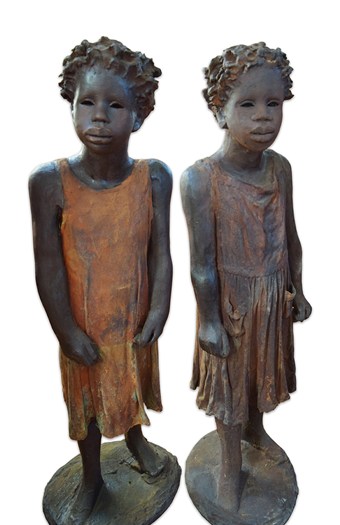
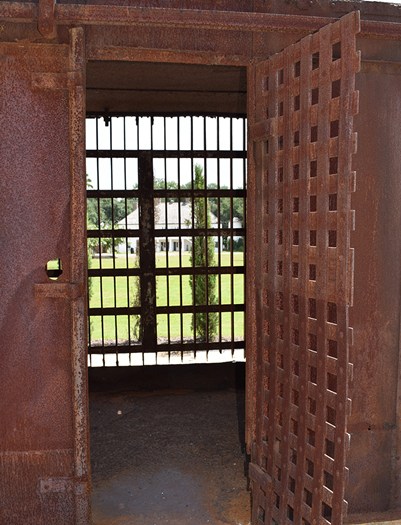
Left: Visitors to Whitney plantation are greeted by wooden figurines depicting the children of slavery. Right: The slaves who defied the owners were punished and locked in hot boxes under the Louisiana sun.
Thousands come each year to see what life was like for the plantation owners in the early 1800s when Oak Alley was built for Jacques Telesphore Roman, whose brother, André, was twice governor of Louisiana. They are greeted at the Big House by actors in elegant period costumes who guide them through lavish rooms decorated with exquisite original furnishings imported from Europe.
The privileged lifestyle showcased in the Big House was obviously much different from what the slaves were forced to endure at the back of the property. There, the Oak Alley Foundation, established by another of the home’s owners, the Stewart family, has reconstructed six slave cabins to give visitors a small glimpse into what life was like for those held captive here.
As intriguing as Oak Alley is, I discover a far more compelling example of the horrors of slavery at the Whitney plantation, a 1752 relic that’s located just a few kilometres away from Oak Alley.
Here, I am literally moved to tears by the story of slavery told through the eyes of the “Children of Whitney” who, like their parents, were kept in chains.
Christine, our guide, welcomes us to the Antioch Baptist Church, where we are introduced to the life-size wooden figures of “slave” children wearing tattered clothes.
“The bigger plantations all had schools and churches like this on the property and, of course, they were reserved for the land owners and their families,” says the youthful Christine, who was baptized in this modest white church that was moved to Whitney from another location.
Christine tells us Whitney started out as an indigo plantation but later was switched to sugar. At its peak, 354 people were enslaved at Whitney, which has now been turned into a memorial of sorts by its present owner, New Orleans lawyer John Cummings, to honour all those held in slavery throughout Louisiana.
Black granite monuments, known as the “Walls of Honor,” are scattered about the property and bear the names of the over 107,000 who were enslaved in this state alone — eventually, over 400,000 names will be carved into the black rock, according to our informative guide.
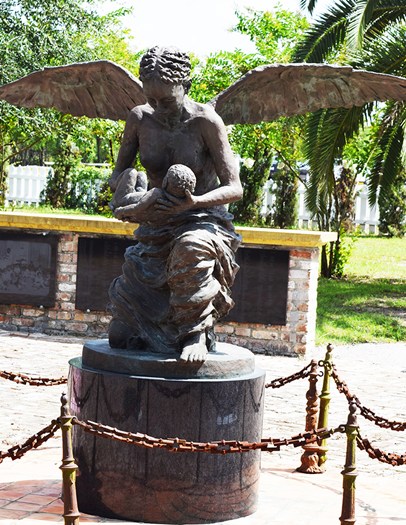
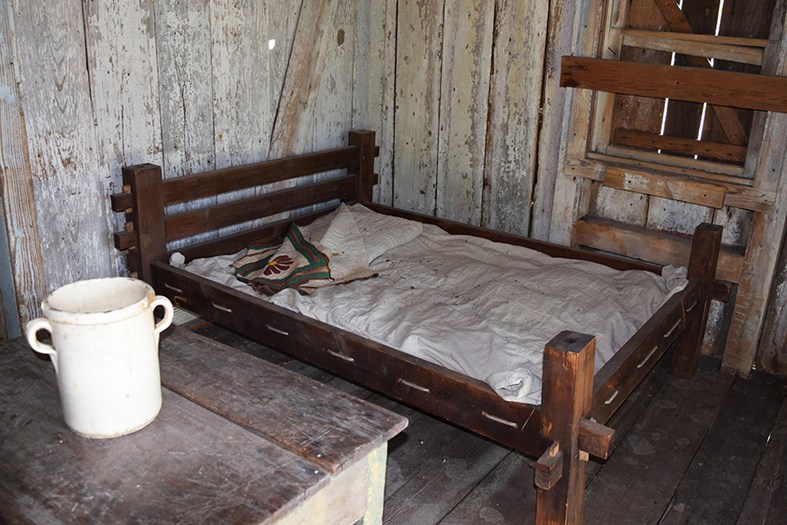
Left: A moving statue marks the spot where over 2,000 slave children are buried at Whitney plantation. Right: Slaves were forced to endure a life not fit for animals.
Thanks to a project started by unemployed writers in the 1930s during the Great Depression, many of those born into slavery were interviewed about their lives on the plantations and their comments are now etched into the granite monuments.
The chilling words “Peace only came in death,” jump off one of the monuments and makes me take a step back. Other comments recall the brutality of the plantation owners and their foremen and the sexual abuse many enslaved women had to endure.
We all gasp when we reach Whitney’s “Field of Angels,” a monument that was erected to honour the 2,200 known children who died while in slavery in St. John the Baptist Parish, where Whitney plantation is located.
Cummings, a white man, was once quoted as saying: “When you leave here, you’re not going to be the same person who came in.” I see a few people wiping tears from their eyes as we stand before the Field of Angels — we are all truly moved by this experience.
Our guide says one of the early owners of Whitney was forced to sell some of his slaves to pay off debts and the sale resulted in him collecting about $60,000, an astonishing amount for the times. Through extensive research, the names of those sold, their skill sets and the amount each fetched in that mass auction is now inscribed on a marble plague near the Walls of Honor.
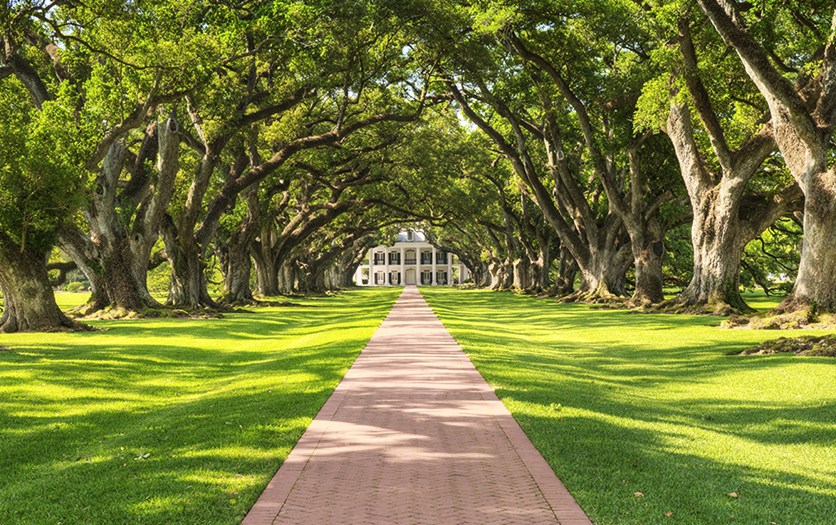
Above: The entrance to Oak Alley is one of the most photographed landmarks in the U.S.
“As you can see, some of the slaves fetched as much as $500 because they had a particular skill,” says Christine. “Tool makers, for instance, were very much in demand back then.”
The lowest price paid at the auction was $105 for a 25-year-old woman named Sery. We are shocked to see the word “idiot” where her skill set should appear.
“The term ‘idiot’ probably means Sery was mentally challenged and that is why she would have fetched so little,” says Christine, who tells us many families were split up in these large auctions and very few were ever reunited.
The slaves were stripped of their identities when the plantation owners, many of whom were French, bought them. Most were given French names like Félicien, Françoise and Antoine.
“One of the main reasons many slaves stayed in Louisiana after the Emancipation — the 1863 proclamation set down by Abraham Lincoln that set the slaves free — is that most of them only spoke French and they feared they would not be understood had they relocated in the northern states,” says our guide.
While wandering around Whitney, we visit the cramped, one-room wooden shacks where two slave families were forced to live. A large steel box just outside the slaves’ living quarters was reserved for those who dared disobey the landowner or his henchmen. The boxes turned into furnaces during Louisiana’s stifling summer months and Christine says many slaves died in them.
While not as grand as the Oak Alley Big House, Whitney’s main lodging is still very impressive, but we are surprised to see there’s no kitchen in the main house.
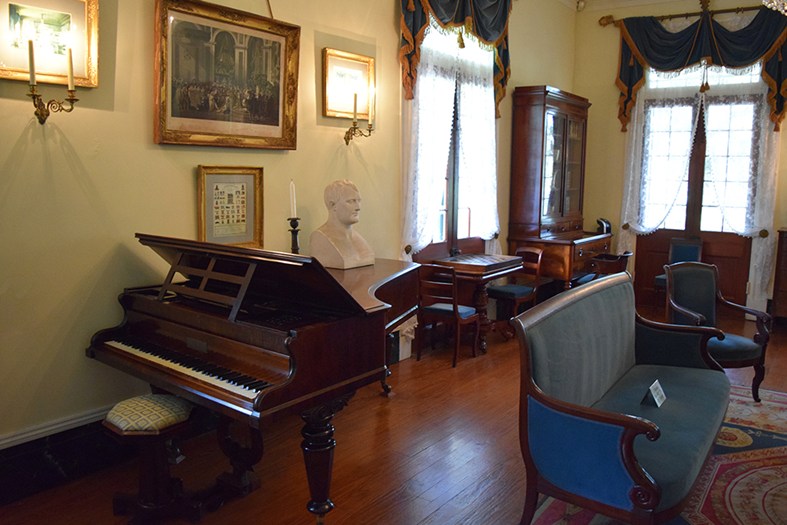
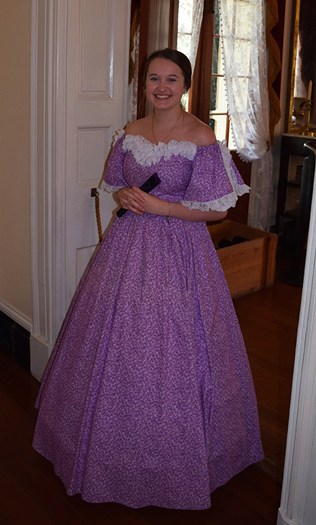
Above: Inside Oak Alley the slave owner and his family enjoyed the best of everything.
“Fire was the plantation owners greatest fear, so just about every one of them had an outdoor kitchen,” says Christine.
Thanks to Hollywood spotlighting the horrors of the slave trade in recent years with the making of movies like 12 Years A Slave and Jango Unchained, plantation tours have become very popular.
And despite a growing movement throughout the South to tear down the monuments and symbols that honour those who supported the slave trade and the Civil War, in which freeing the slaves became the main cause, historic plantations like Whitney and Oak Alley will survive because, as Cummings points out, “We (Americans) have to own our history.”
Information
According to records — between 1525 and 1866 — in the recorded history of the slave trade, 12.5 million Africans were shipped to the New World — 10.7 million disembarked in North America, the Caribbean and South America. A small percentage, about 388,000, were shipped directly to North America. / Felicity Plantation is where 12 Years A Slave was filmed. Oak Alley, St. Joseph’s Plantation and Laura Plantation have also been used as film backdrops. / Oak Alley welcomed its 5 millionth visitor in 2015. / The Stewart Gardens are especially nice to visit during your self-guided tour. /Oak Alley welcomes overnight guests in one of its well-appointed cottages not far from the slave quarters. New accommodation is also being added. An overnight stay in a cottage starts around $165 U.S. Oak Alley’s gift shop restaurant offers some amazing local cuisine — do not forget to try the alligator appetizer. / To find out more about Oak Alley go towww.oakalleyplantation.com/ For information on Whitney Plantation, go to www.whitneyplantation.com/ Air Canada and a number of U.S. airlines flies to New Oreleans from most major Canadian cities.